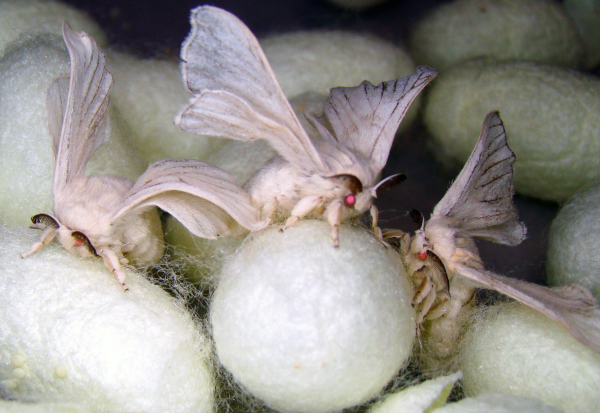Extract, Format, and Print Statistical Output.
cocoon 
The goal of {cocoon} is to provide functions that flexibly format statistical output in a way that can be inserted into R Markdown or Quarto documents. This is analogous to the apa_print() functions in the {papaja} package, but functions in {cocoon} can print Markdown or LaTeX syntax. If your output document is a PDF, this doesn’t matter. But if your output document is a Word document (as required by many journal publishers), Markdown syntax generates editable output instead of an image of output. The default style for statistical output follows American Psychological Association style, but many defaults can be over-ridden to flexibly format output.
Installation
You can install the development version of {cocoon} from GitHub with:
# install.packages("remotes")
remotes::install_github("JeffreyRStevens/cocoon")
Example
For an example, we’ll create a correlation from the mtcars data set.
library(cocoon)
(cars_corr <- cor.test(mtcars$mpg, mtcars$disp))
#>
#> Pearson's product-moment correlation
#>
#> data: mtcars$mpg and mtcars$disp
#> t = -8.7472, df = 30, p-value = 9.38e-10
#> alternative hypothesis: true correlation is not equal to 0
#> 95 percent confidence interval:
#> -0.9233594 -0.7081376
#> sample estimates:
#> cor
#> -0.8475514
Now we can apply the format_stats() function to cars_corr to create a Markdown-formatted character string for the statistical results. We can embed this as inline R Markdown code to generate the results.
Code
Fuel efficiency and engine displacement were highly correlated (`r format_stats(cars_corr)`).
Output
Fuel efficiency and engine displacement were highly correlated (r = -.85, 95% CI [-0.92, -0.71], p < .001).
Control formatting
We can also alter the output to allow other formatting. For instance, we may not like APA’s silly rule to remove leading zeros before a value that cannot exceed 1 (like correlations and p-values). And we may not want to include the confidence limits around the correlation coefficient. Finally, maybe we don’t want the statistics labels to be italicized.
Code
Fuel efficiency and engine displacement were highly correlated (`r format_stats(cars_corr, pzero = TRUE, full = FALSE, italics = FALSE)`).
Output
Fuel efficiency and engine displacement were highly correlated (r = -0.85, p < 0.001).
Functions and formatting types
format_stats(): Statistical objects- Correlations (output from
cor.test()andcorrelation::correlation(), including Pearson’s, Kendall’s, and Spearman’s correlations) - Student t-tests, Wilcoxon rank sum, and signed rank tests (output from
t.test()andwilcox.test(), including one-sample, two-sample independent, and paired tests) - Bayes factors (output from
{BayesFactor}package)
- Correlations (output from
format_summary(): Means and error (calculates from vector or uses vector of mean and error interval or mean, lower error limit, and upper error limit)format_p(): P-valuesformat_bf(): Bayes factors (numerics)format_scientific(): Scientific notationformat_num(): Other numbersformat_chr(): Italicize character strings
Related packages
{papaja}- This package uses theapa_print()function to convert a number of R statistical objects into R Markdown output. However, it only outputs LaTeX syntax and only generates APA formatted output with minimal flexibility to alter the output.{apa}- This package also converts some R statistical objects to R Markdown output. While it allows other output format such as Markdown, it also only generates APA formatted output with minimal flexibility to alter the output.{insight}- This package extracts information from model objects. It includesformat_p()andformat_bf()functions that achieves similar goals as in this package, but they do not allow as much control over formatting of the labels or values.
Citation
To cite {cocoon}, use:
Stevens, Jeffrey R. (2024). cocoon: Extract, format, and print statistical output. (version 0.1.0) https://github.com/JeffreyRStevens/cocoon
Contributing
Contributions to {cocoon} are most welcome! Feel free to check out open issues for ideas. And pull requests are encouraged, but you may want to raise an issue or contact the maintainer first.
Please note that the cocoon project is released with a Contributor Code of Conduct. By contributing to this project, you agree to abide by its terms.
Package name
The package name {cocoon} captures the main goal of transforming statistical inputs into nicely formatted outputs. This mirrors cocoons, which caterpillars build to transform into beautiful adult insects. Cocoons are formally defined as a case that the larvae of moths spin around their pupa. So cocoons are cases built by moths and some other insects, whereas butterflies produce a chrysalis, which forms from their skin.

Photo source: Silk moths from Wikimedia Commons.
